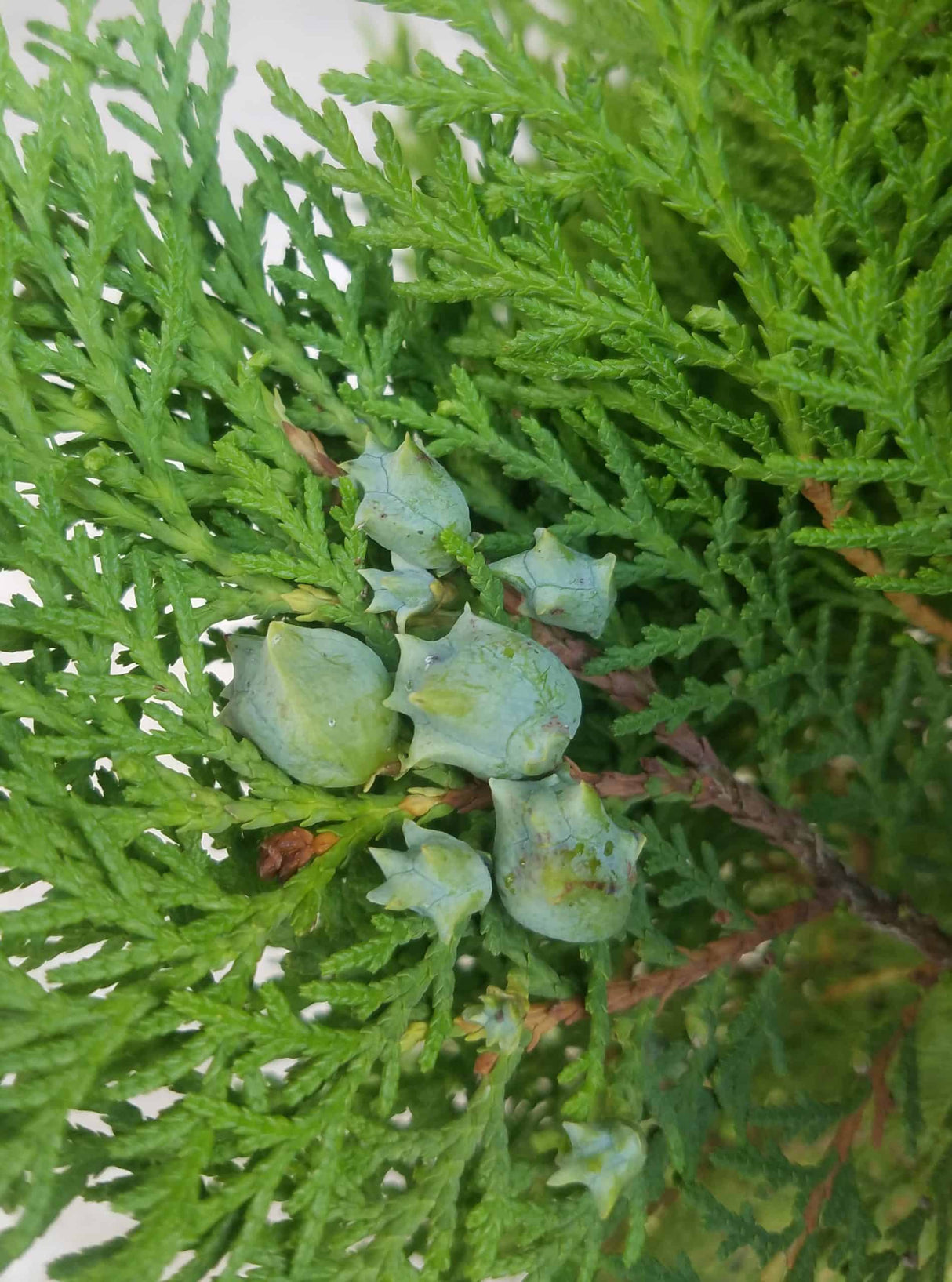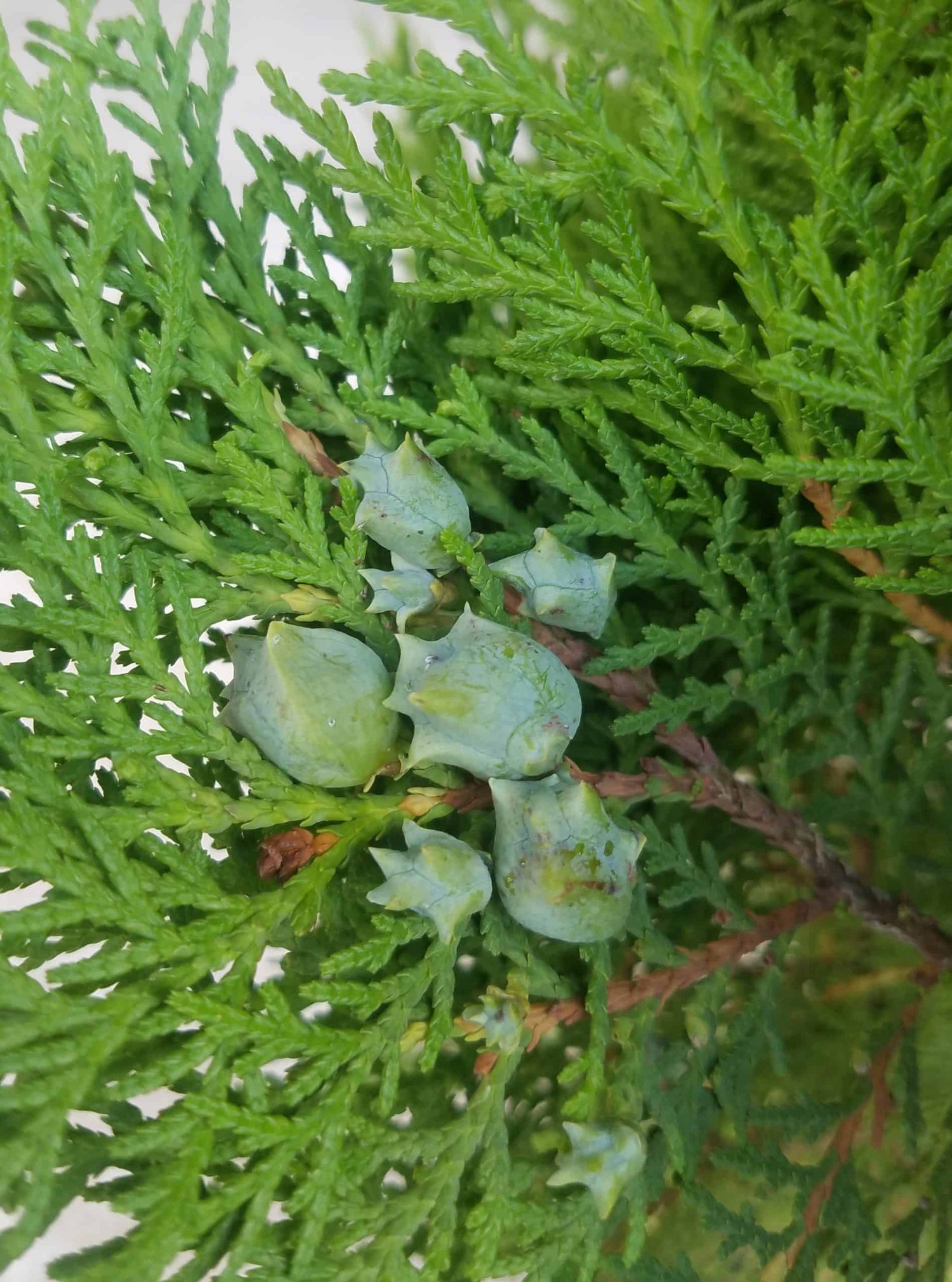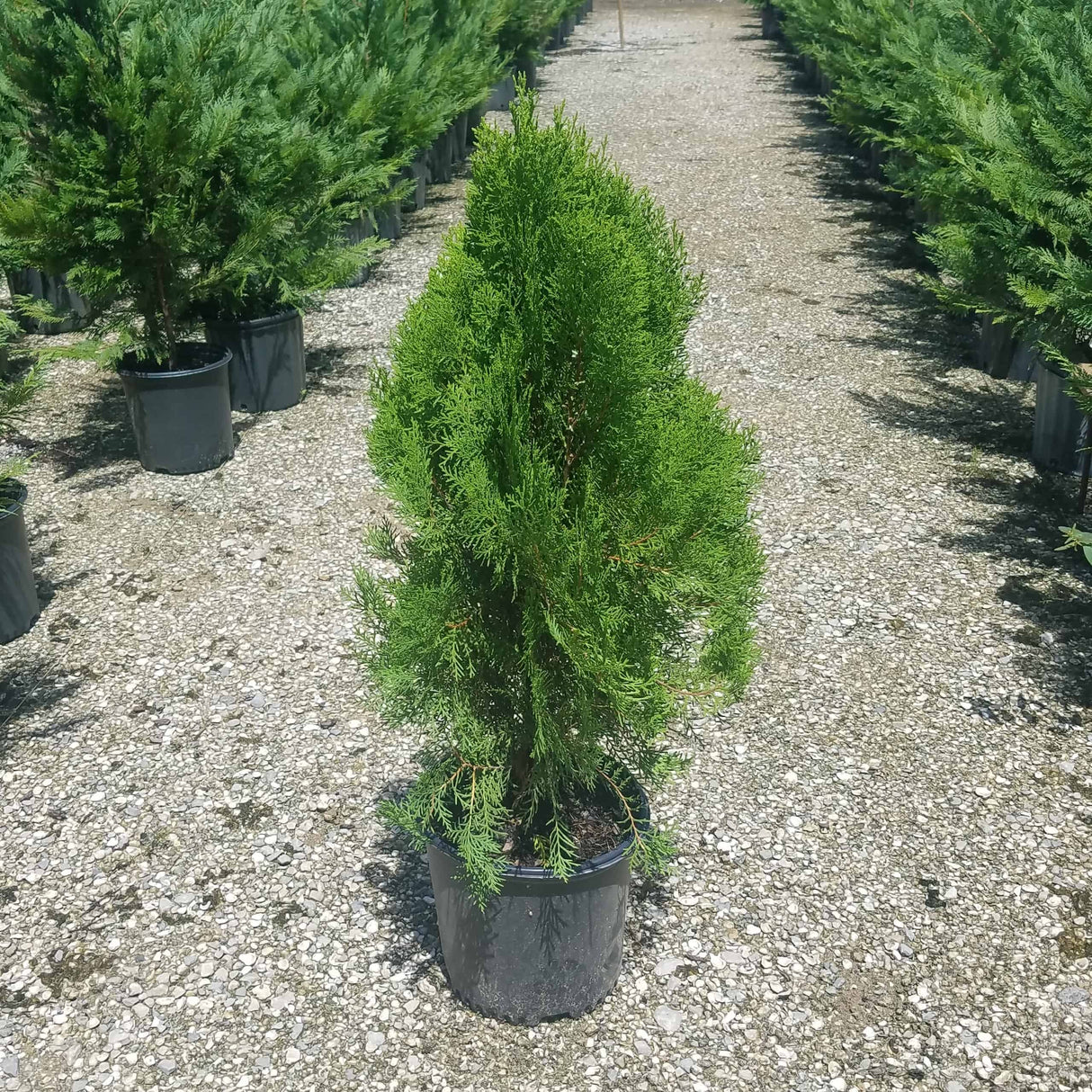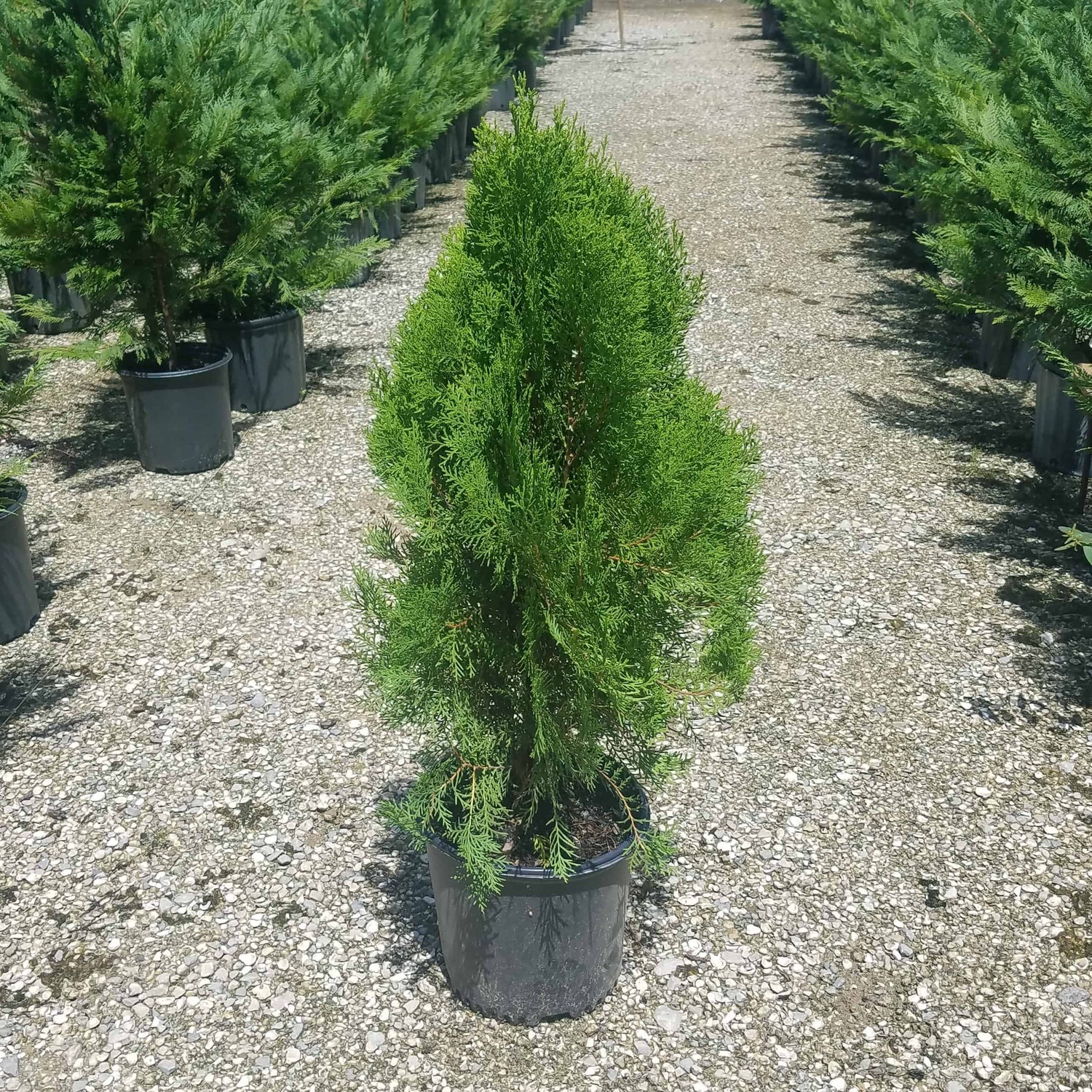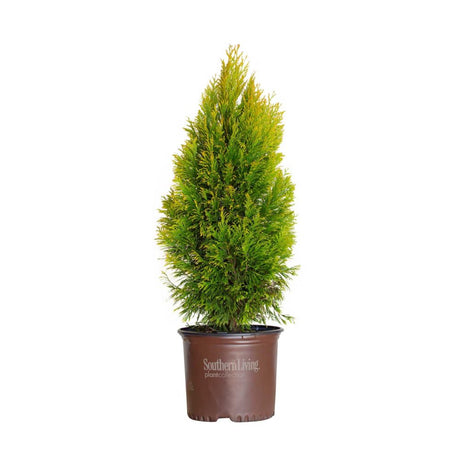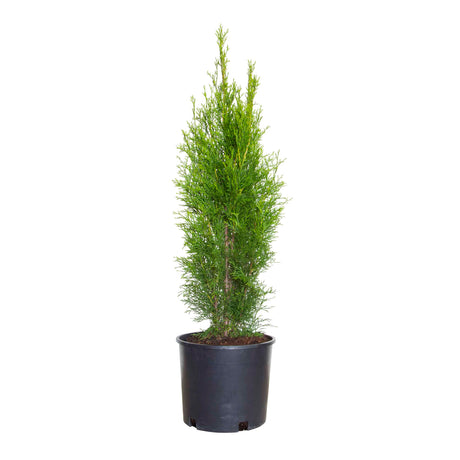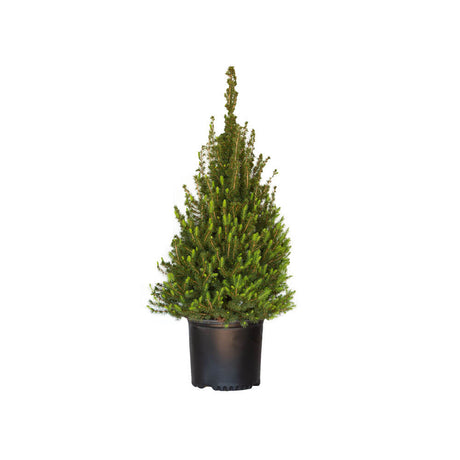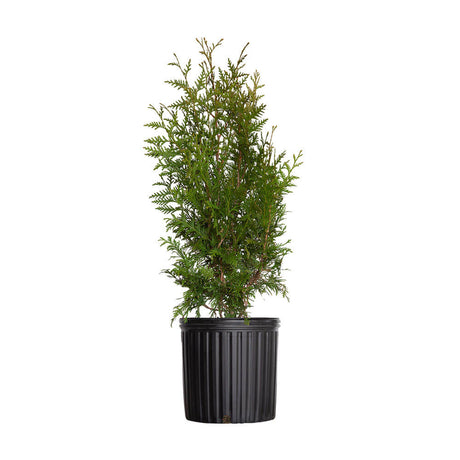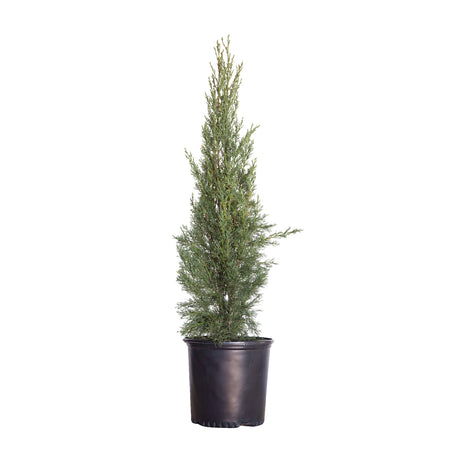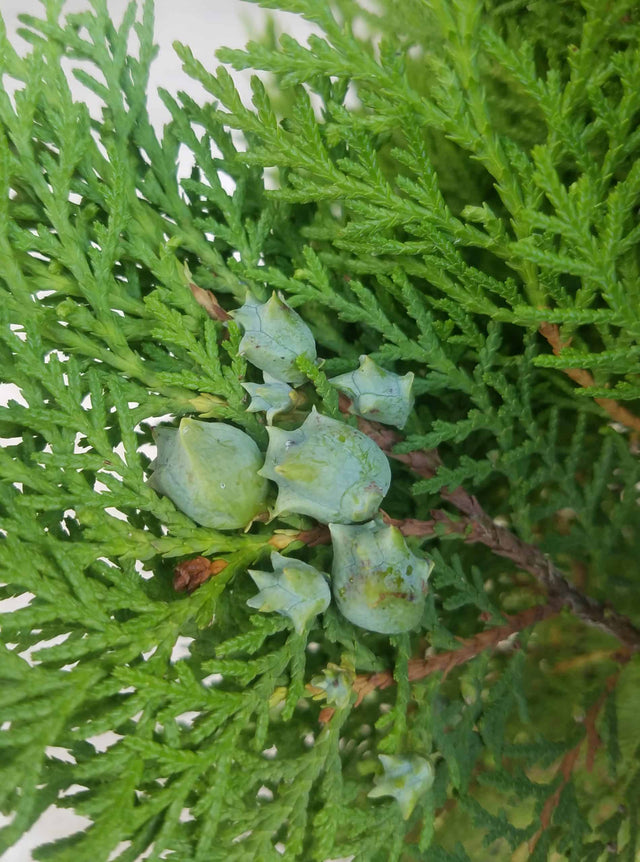Blue Cone Arborvitae
Blue Cone Arborvitae - 2.5 Quart is backordered and will ship as soon as it is back in stock.
Couldn't load pickup availability
Description
Description
The Blue Cone Arborvitae (Thuja orientalis) is an upright/Mounded evergreen that brings great structure to a landscape. It has bright green foliage that experiences minimal bronzing during the winter months. This foliage is fanned and feathery, quite similar in texture to the very popular Emerald Green Arborvitae. It grows upright with a mounded (egg-shaped) habit and reaches a moderate size of 10-12' H x 5-6' W at maturity. Another distinguishing feature of the Blue Cone Arborvitae are the 1/2"-3/4" cone that are baby-powder blue that will ripen to a mahogany brown.
Once established, this tree proves itself to be quite hardy. It's heat and drought tolerant and handles cold in stride as well.
This cultivar is perfect as a low-maintenance privacy screen, specimen, accent, or wind break. Furthermore, its dense foliage does a fantastic job of filtering out noise and pollution when planted in a tight row as a privacy planting.
Blue Cone Arborvitae Care
- This selection is hardy from USDA Zones 5-10.
- It should be planted in Full Sun to Part Shade for ideal results.
- Water your new plantings 2-3 times per week for the first growing season. After it's completely established in your landscape, it will prove itself to be notably water-wise.
- It handles most soils as long as it has good drainage
- Fertilize in spring with a slow-release, balanced fertilizer to promote new growth
How to Plant:
- First, dig a hole roughly three times the width of the root ball of your plant to make it easier for the roots to spread out.
- Dig the hole deep enough that your plant will sit level with the ground around it. If you have slow-drainage, you can plant slightly above the ground level.
- Mix your native soil with rich gardening soil or composted manure to provide extra nutrients and support plant growth.
- If your soil is clay-heavy, we recommend mixing your native clay soil with equal parts of pine bark mulch to improve drainage and the overall breathability of the soil.
- Put the plant in the hole and backfill around it with the soil mixture.
- Top the soil beneath your plant with 3-4 inches of mulch to help it retain moisture.
- Soak the plant with a hose afterward to hydrate the plant, as well as get the soil and mulch situated.
Popular Companion Plants
- We recommend pairing this beauty with rounded evergreens, such as the Baby Gem Boxwood or Low Rider Holly. This is an easy way to make some fantastic shape contrast in your landscape.
- Try it with assorted Rose bushes. Red-blooming varieties in particular, like the Red Double Knock Out, will really pop against the green foliage.
- For a really unique look, plant it with either the Fire Chief Arborvitae or Pancake Arborvitae (or both).
Care & Use
Care & Use
Spacing Recommendations
Spacing Recommendations
-
Scientific Name
-
Hardiness Zone5, 6, 7, 8, 9, 10
-
Sun ExposureFull Sun to Part Shade
-
Evergreen or DeciduousEvergreen
-
FeaturesAttracts Birds / Butterflies, Drought Tolerant, Heat Tolerant, Sun Loving
-
Feature ColorBlue, Green
-
UsesAccent, Privacy Planting
-
Water NeedsWater-Wise
-
Bloom SeasonNone
Growing Zones : 5, 6, 7, 8, 9, and 10

